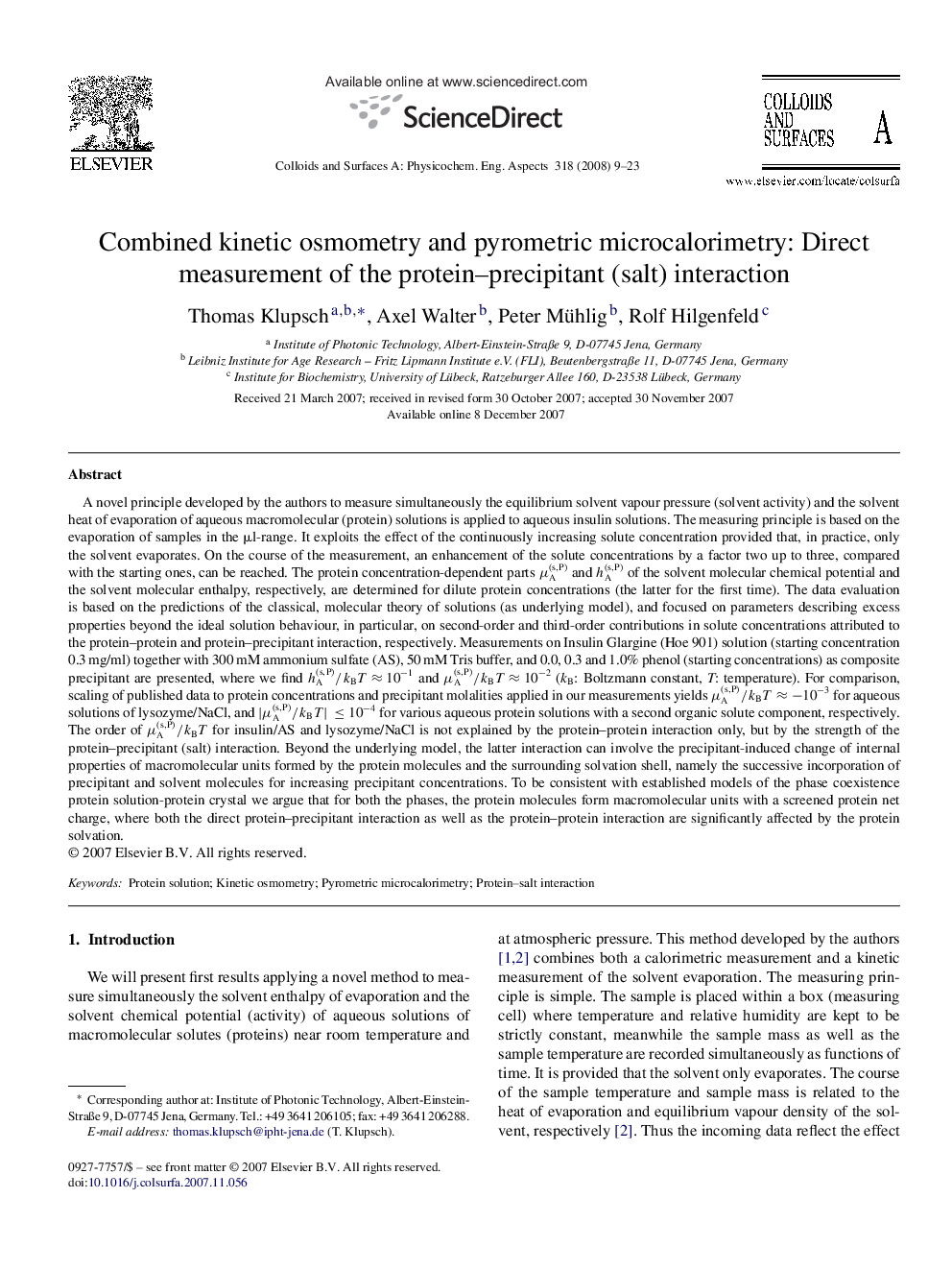| کد مقاله | کد نشریه | سال انتشار | مقاله انگلیسی | نسخه تمام متن |
|---|---|---|---|---|
| 597063 | 1454054 | 2008 | 15 صفحه PDF | دانلود رایگان |

A novel principle developed by the authors to measure simultaneously the equilibrium solvent vapour pressure (solvent activity) and the solvent heat of evaporation of aqueous macromolecular (protein) solutions is applied to aqueous insulin solutions. The measuring principle is based on the evaporation of samples in the μl-range. It exploits the effect of the continuously increasing solute concentration provided that, in practice, only the solvent evaporates. On the course of the measurement, an enhancement of the solute concentrations by a factor two up to three, compared with the starting ones, can be reached. The protein concentration-dependent parts μA(s,P) and hA(s,P) of the solvent molecular chemical potential and the solvent molecular enthalpy, respectively, are determined for dilute protein concentrations (the latter for the first time). The data evaluation is based on the predictions of the classical, molecular theory of solutions (as underlying model), and focused on parameters describing excess properties beyond the ideal solution behaviour, in particular, on second-order and third-order contributions in solute concentrations attributed to the protein–protein and protein–precipitant interaction, respectively. Measurements on Insulin Glargine (Hoe 901) solution (starting concentration 0.3 mg/ml) together with 300 mM ammonium sulfate (AS), 50 mM Tris buffer, and 0.0, 0.3 and 1.0% phenol (starting concentrations) as composite precipitant are presented, where we find hA(s,P)/kBT≈10−1 and μA(s,P)/kBT≈10−2 (kB: Boltzmann constant, T : temperature). For comparison, scaling of published data to protein concentrations and precipitant molalities applied in our measurements yields μA(s,P)/kBT≈−10−3 for aqueous solutions of lysozyme/NaCl, and |μA(s,P)/kBT| ≤10−4 for various aqueous protein solutions with a second organic solute component, respectively. The order of μA(s,P)/kBT for insulin/AS and lysozyme/NaCl is not explained by the protein–protein interaction only, but by the strength of the protein–precipitant (salt) interaction. Beyond the underlying model, the latter interaction can involve the precipitant-induced change of internal properties of macromolecular units formed by the protein molecules and the surrounding solvation shell, namely the successive incorporation of precipitant and solvent molecules for increasing precipitant concentrations. To be consistent with established models of the phase coexistence protein solution-protein crystal we argue that for both the phases, the protein molecules form macromolecular units with a screened protein net charge, where both the direct protein–precipitant interaction as well as the protein–protein interaction are significantly affected by the protein solvation.
Journal: Colloids and Surfaces A: Physicochemical and Engineering Aspects - Volume 318, Issues 1–3, 1 April 2008, Pages 9–23